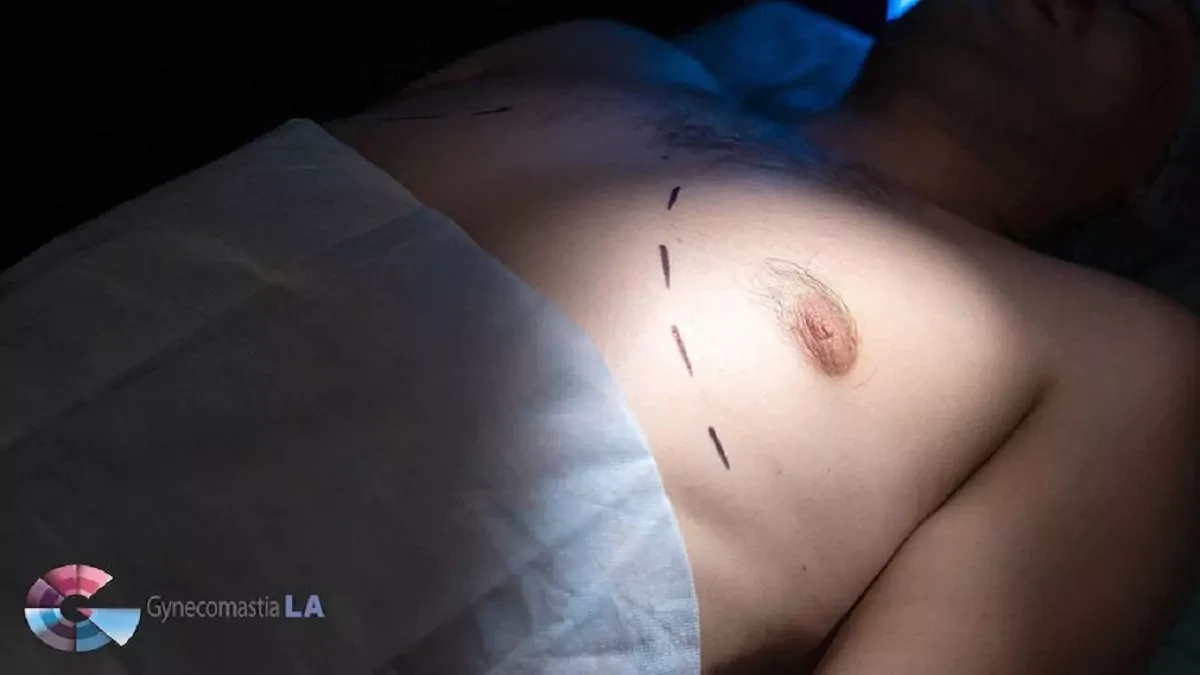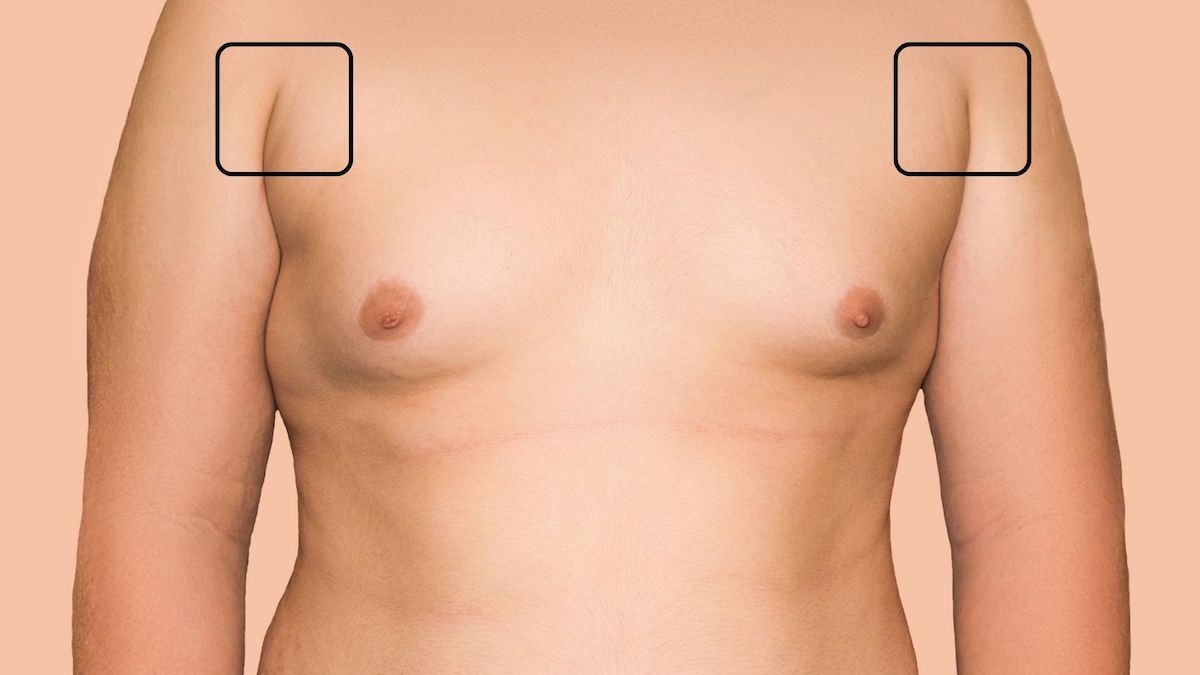Introduction: Male Breast Surgery: Understanding Gynecomastia and Treatment Options
Gynecomastia is a condition characterized by the development of enlarged breast tissue in males, often requiring Male Breast Surgery for correction. Common symptoms include swelling in the breast area, tenderness, and an increase in the diameter of the areola. This condition can have a significant impact on individuals, causing emotional distress and a decrease in self-confidence.
Male breast reduction surgery is a treatment option for gynecomastia, which involves the removal of excess breast tissue to create a flatter, more masculine chest. It is important for individuals to understand the potential emotional and physical effects of gynecomastia, as well as the available treatment options. Dr. Babak Moein, a top aesthetic surgeon, specializes in male breast reduction surgery and is known for achieving natural-looking outcomes.
Male breast reduction surgery offers numerous benefits, including improved self-esteem, confidence, and a more balanced chest appearance. It is essential to consider the expertise of a skilled surgeon like Dr. Goldberg to achieve the desired results and minimize scarring. Understanding gynecomastia and its treatment options is crucial for individuals seeking to improve their overall quality of life and confidence.

What is gynecomastia surgery?
Gynecomastia surgery, also known as male breast reduction, is a surgical procedure to correct the enlargement of the male breast tissue. This condition can be caused by hormonal imbalances, genetics, obesity, or the use of certain medications. The surgical correction process involves the removal of excess breast tissue and the reshaping of the chest to achieve a more masculine contour.
Candidates for male breast surgery, specifically for gynecomastia, are typically men who feel self-conscious about the appearance of their breasts and have realistic expectations regarding the results of the procedure. Before undergoing surgery, it is essential to consider factors such as overall health, any underlying medical conditions, and the potential risks and benefits associated with the surgery.
The risks of male breast surgery may include scarring, infection, changes in nipple sensation, and asymmetry. However, for suitable candidates, the benefits of the surgery can significantly enhance self-confidence and improve body image.
In conclusion, gynecomastia surgery is a viable option for men who are experiencing discomfort or self-consciousness due to enlarged breast tissue. It is important to consult with a qualified plastic surgeon to discuss the details and potential outcomes of the procedure before making a decision.
Why do people get gynecomastia surgery?
Gynecomastia, commonly referred to as “man boobs,” is a condition in which males develop excess breast tissue. This can be a source of embarrassment and self-consciousness for many men, impacting their confidence and quality of life. Gynecomastia surgery, also known as male breast reduction, is a common procedure sought out by those looking to achieve a flatter, more masculine chest contour.
There are numerous reasons why individuals opt for this surgery, including the desire to improve their physical appearance, alleviate psychological distress, and regain a sense of masculinity. In many cases, diet and exercise alone may not be enough to reduce the size of the breasts, making surgery the most effective solution. Ultimately, the decision to undergo gynecomastia surgery is deeply personal, and for many individuals, it is a transformative step in regaining their confidence and sense of self.
Physiologic Gynecomastia
Physiologic gynecomastia is the benign enlargement of the male breast tissue, and it is a common condition that can occur at different stages of life. In newborns, gynecomastia peaks in the first few weeks of life, affecting up to 60% of male infants due to the transfer of maternal hormones during pregnancy. During adolescence, gynecomastia is most prevalent in the 14-15 age range, affecting up to 60% of adolescent boys due to hormonal changes during puberty. In men over 50, gynecomastia becomes more common again, with up to 70% of men experiencing some degree of breast tissue enlargement, often attributed to age-related hormonal changes.
The possible causes of gynecomastia in newborns, adolescents, and older men include hormonal imbalances, medications, certain health conditions, and lifestyle factors. Risk factors for persistent gynecomastia include obesity, the use of anabolic steroids, and chronic liver or kidney disease. In cases where gynecomastia does not resolve on its own, Male Breast Surgery may be considered as an effective treatment option to restore a more masculine chest contour.
Symptoms of physiologic gynecomastia include breast tenderness and enlargement of breast tissue. Evaluation for persistent symptoms may involve physical examination, medical history review, and hormone level testing to rule out underlying conditions.
Overall, physiologic gynecomastia is a common and generally benign condition that can occur at different stages of life, with various potential causes and risk factors. Proper evaluation and management are important for persistent symptoms.
Nonphysiologic Gynecomastia
Nonphysiologic gynecomastia is a condition characterized by the overdevelopment of breast tissue in males, and it is often caused by a variety of factors. Chronic conditions such as liver or kidney disease, as well as hormonal imbalances like hypogonadism, can contribute to the development of nonphysiologic gynecomastia.
Additionally, certain medications including antiandrogens, anabolic steroids, and some antiretroviral drugs can also lead to the condition. Substance abuse, particularly of alcohol and certain recreational drugs, has been linked to nonphysiologic gynecomastia as well. Finally, tumors in the testes, adrenal glands, or pituitary gland can cause hormonal imbalances that lead to the development of gynecomastia.
The mainstay of treatment for nonphysiologic gynecomastia involves identifying and discontinuing any contributing medications and treating any underlying chronic conditions. In some cases, medications such as tamoxifen or raloxifene may be prescribed to help reduce breast tissue, and in select patients, surgery may be recommended to remove excess breast tissue. Ultimately, the best course of treatment for nonphysiologic gynecomastia will depend on the individual patient’s specific circumstances and underlying causes.
How common is gynecomastia surgery (male breast reduction surgery)?
Gynecomastia surgery, also known as male breast reduction surgery, is a fairly common procedure. In the United States, it is estimated that around 20,000 gynecomastia surgeries are performed annually. The prevalence of gynecomastia as a condition is also significant, with studies suggesting that up to 65% of adolescent boys and 55% of men over the age of 50 may experience some degree of gynecomastia.
Gynecomastia is quite common and can have a significant impact on individuals assigned to males at birth. It can lead to emotional distress, body image issues, and a decrease in self-esteem. Symptoms of gynecomastia include swelling of the breast tissue, tenderness or pain, and an increase in the diameter of the areola. Potential candidates for male breast reduction surgery are individuals who have tried non-surgical treatments, are in good physical and mental health, and have realistic expectations for the outcome of male breast surgery. Overall, gynecomastia surgery is a standard and effective option for those affected by this condition.

What happens before gynecomastia surgery?
Before undergoing gynecomastia surgery, it is important to have a thorough discussion with your provider about your surgical options, goals, and medical history. Your provider will assess your overall health and may recommend necessary tests, such as a complete blood count, to evaluate your health and determine the cause of gynecomastia.
In preparation for the surgery, you may be instructed to stop taking certain medications and to quit smoking, if applicable, to reduce the risk of complications during and after the procedure. Your provider may also provide instructions for fasting before the surgery.
It is crucial to strictly follow your provider’s recommendations to ensure the best possible outcome from the surgery. By adhering to these guidelines, you can help minimize potential risks and optimize the success of the procedure.
By thoroughly preparing for gynecomastia surgery and following your provider’s instructions, you can feel confident and informed about the process before undergoing the procedure.
What happens during gynecomastia surgery?
Gynecomastia surgery, also known as male breast reduction surgery, typically involves a combination of liposuction and excision techniques. The surgery is usually performed under general anesthesia to ensure the patient’s comfort and safety. During the procedure, the surgeon may use liposuction to remove excess fat from the chest area, followed by excision to remove any glandular tissue or excess skin. The goal is to achieve a flatter, more masculine chest contour.
After male breast surgery, it is essential to have someone drive you home, as the effects of general anesthesia can impair your ability to drive. Supportive garments, such as a compression vest, may be recommended to minimize swelling and support the healing tissues. Pain and swelling can be managed with prescribed medications and by following post-surgery care instructions provided by the surgeon.
Prior to surgery, patients will need to discuss their options with the surgeon, provide their medical history, and undergo any necessary tests. It is also essential to avoid certain medications and tobacco use before the surgery to reduce the risk of complications.
Overall, gynecomastia surgery involves a tailored approach to address each patient’s specific needs, using a combination of surgical techniques and general anesthesia to achieve the desired results.
What happens after gynecomastia surgery?
After gynecomastia surgery, it is important to follow the post-surgery care and recovery process. This includes managing bandages by keeping them clean and dry, as well as following any specific instructions from your surgeon. Medications should be taken as prescribed to manage pain and prevent infection. Drainage tubes, if placed during surgery, should be managed according to your surgeon’s instructions to prevent complications.
Wearing a supportive garment is crucial for proper healing and to minimize swelling after male breast surgery. It’s important to wear this garment as directed by your surgeon to achieve the best results. Follow-up appointments are essential to monitor your healing progress and address any concerns that may arise.
Potential complications to watch for after surgery include infection, excessive bleeding, or adverse reactions to medications. It’s important to be aware of any unusual pain, swelling, or changes in the surgical area and to contact your surgeon if you experience any concerning symptoms.
By following these guidelines for post-surgery care and recovery, you can optimize your healing process and achieve the best possible results from your gynecomastia surgery.

What are the advantages of gynecomastia surgery?
Gynecomastia surgery, also known as male breast reduction, offers numerous advantages for those suffering from excess breast tissue. One of the primary benefits is the increase in confidence that comes with a more satisfying appearance. Many individuals feel self-conscious about their chest and may avoid certain activities or clothing as a result. Gynecomastia surgery can address this discomfort and allow individuals to feel more comfortable in their bodies.
Aside from the psychological benefits, gynecomastia surgery can also improve physical comfort. Excess breast tissue can cause pain and discomfort, especially during physical activities such as exercising or playing sports. By addressing this issue, individuals can experience increased physical freedom and engage in activities that were previously uncomfortable.
Additionally, the potential benefits of gynecomastia surgery include feeling more at ease in clothing and overall improved quality of life. For many individuals, undergoing this procedure can lead to a more satisfying appearance and a greater sense of well-being. Ultimately, gynecomastia surgery offers a way to address any discomfort or pain caused by excess breast tissue, leading to increased confidence and improved physical comfort.
What are the risks or complications of gynecomastia surgery?
Some potential risks and complications of gynecomastia surgery include blood clots, asymmetrical breasts, scarring, infection, and loss of sensation. Blood clots can form in the legs and potentially travel to the lungs, causing a pulmonary embolism. Asymmetrical breasts may occur when the surgeon removes different amounts of breast tissue from each side, resulting in an uneven appearance.
Scarring can be a side effect of surgery, varying in severity from minor to noticeable. Infection is a risk with any surgical procedure, potentially leading to increased pain, swelling, or fever. Loss of sensation in the chest area may occur due to damage to the nerves during surgery, resulting in numbness or altered sensation. It is essential for patients to discuss these potential risks and complications with their surgeon before proceeding with gynecomastia surgery.
What is the recovery time after getting gynecomastia surgery?
After gynecomastia surgery, patients can expect initial soreness and tenderness for the first few days, which can be managed with prescribed pain medication. Most patients are able to return to work within 1-2 weeks, although strenuous physical activity should be avoided for 4-6 weeks to ensure proper healing. The final results of the surgery typically become apparent within 3-6 months, with any residual swelling or bruising subsiding during this time.
The potential procedures involved in gynecomastia surgery include liposuction to remove excess fat, excision of glandular tissue, and skin tightening. The impact these procedures have on recovery time can vary based on the individual patient and the specific techniques used during the surgery.
Post-surgery care instructions may include restrictions on lifting and reaching for a specific period, as well as the use of prescribed medications to manage discomfort and aid in healing. Drainage tubes may also be used to prevent fluid buildup in the surgical area, and proper care and maintenance of these tubes will be part of the post-operative instructions. Patients should closely follow these instructions to ensure a smooth recovery process and achieve optimal results.
Conclusion: Male Breast Surgery
Male breast reduction surgery, also known as gynecomastia surgery, is a procedure aimed at reducing excess breast tissue in men. The surgery involves liposuction and excision of glandular tissue to create a flatter, more masculine chest. The recovery process typically includes wearing a compression garment for a few weeks and avoiding strenuous activities for at least a month. Patients can expect some swelling and bruising initially, but these should gradually subside, with final results visible within a few months.
Following post-operative instructions is crucial for optimal healing and satisfaction with the results. This includes wearing the compression garment as directed, attending follow-up appointments, and avoiding activities that can strain the chest area. Adhering to these guidelines can help minimize complications and ensure the best possible outcome from the surgery.
In conclusion, male breast reduction surgery offers a solution for men who are self-conscious about the appearance of their chest. By summarizing the procedure, and recovery process, and highlighting the importance of following post-operative instructions, patients can achieve the desired results and regain confidence in their physical appearance.

Dr.Babak Moeinolmolki
LA Cosmetic Surgeon Dr. Moein is board-certified by the American Board of General Surgery.
